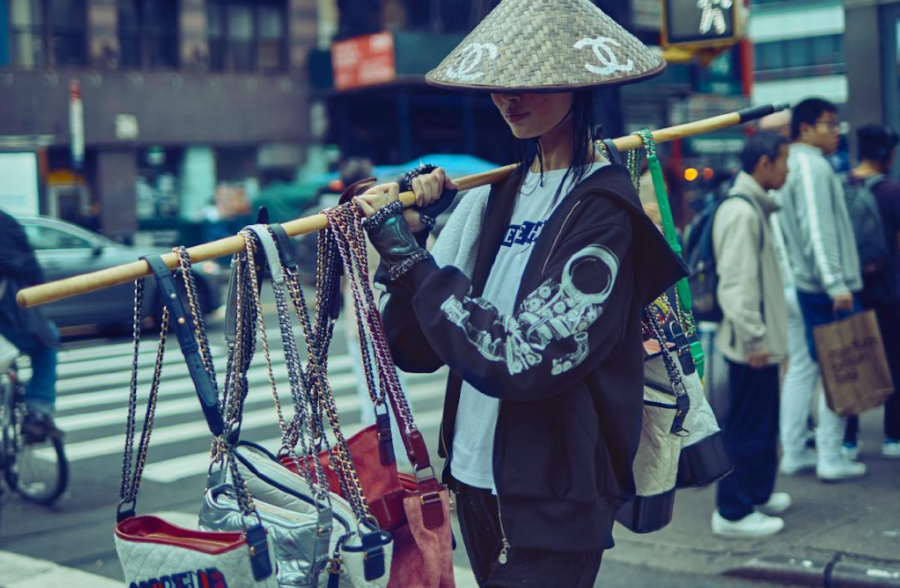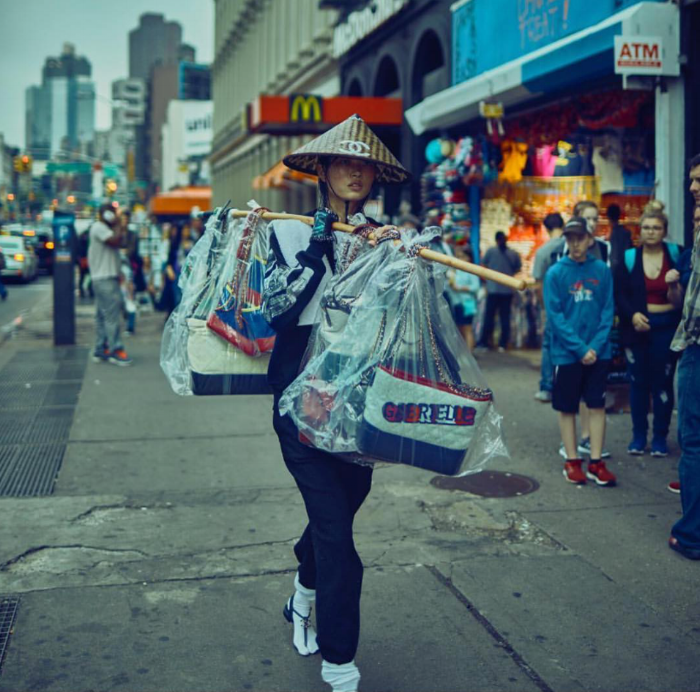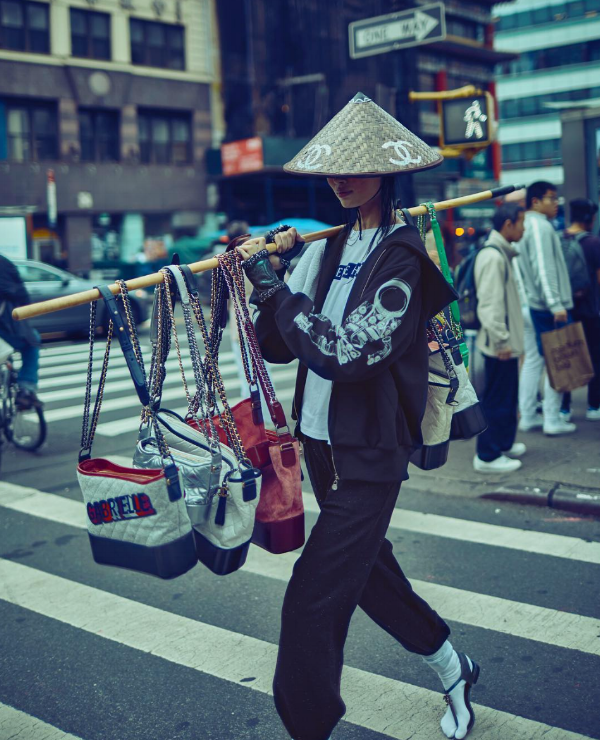
image: Interview
Interview Magazine is causing quite a stir in connection with a recent editorial. Social media users, including some well-known names in the fashion industry, have slammed the editorial – which futures model Xiaoyin walking down the street in Chinatown, New York wearing a conical hat and carrying Chanel bags on a stick – for being culturally insensitive.
“I’m surprised Interview mag would commission something so clearly racist. Apparently, the only way they can make this image interesting to use racist stereotypes,” said one Instagram user, whose comment sums up the general tone of the responses to the photos, which photographer Billy Kidd posted to his Instagram this past week.
Photographer William Yan, who has worked with brands ranging from Oscar de la Renta to LEVI’s, first took to Kidd’s Instagram to comment on the “offensive” nature of the photos – which are part of a recent Interview Magazine print editorial, entitled, “Coco Served Hot,” that highlights Chanel’s newest bag range.

Designer Phillip Lim chimed in, as well, stating: “This is NOT OK! … This is offensive and culturally insensitive. I’m so tired of these sorts of stereotype images being passed off as ‘fashion’ imagery #bullshit and what a shame Interview mag for commissioning such poor judgment and taste! What does this say about Asian culture? What stereotype are you perpetuating!? It’s 2017, time to wake up and Chanel – who I believe has such a huge business in Asia, perhaps should address this?”
Thailand-born, New York-based Lim followed up, writing, “These images reinforce several stereotypes that Asian immigrants/ communities work so hard to break from – 1) hawking counterfeit goods, 2) it mocks the actual everyday struggle of immigrants trying to do what they can to survive in a country foreign to them, 3) mainland Chinese workers (unless they are rural farmers in fields, or objectified in type cast films) actually don’t live like this – this is just to start … It’s the equivalent of casting Hispanics in field dresses in Dior.”
Still yet, photographer Mark Gong – whose work has appeared in Vogue, Elle, GQ, Numero, and The New York Times – joined in the discussion, writing: “My culture and heritage is more than hawkers and rice hats, but that’s immediately what the uneducated would think of when you ask them about Eastern Asia.”
He continued on to note, “Nothing about the image gives me a sense of paying tribute or honoring their hard work. Quite the opposite it boils down their struggle into a caricature for the sake [of] selling clothing. Looking at this image brought back painful memories and reminded me just how much further we have to go.”
New York-based Kidd – who recently shot Marc Jacobs’ Pre-Fall 2017 lookbook – defended the image, saying that he found “the act of selling goods tied to a stick over one’s shoulders, the hat, etc.” to be common “in Bangkok while I was there shooting a campaign several months back.” He also noted that when he and stylist Andrew Mukamal researched for the editorial, they “found this is common all over Asia.”

As for the nature of the editorial, Kidd stated: “My intentions for this shoot are definitely not to perpetuate a negative view of Asians but intended to be an homage to the working class Chinese which was what inspired me. Obviously, it did not translate that way for you and others, my apologies for any offense. However, I love this image and still see it as an homage.”
“I like to think if we can find the beauty in grueling, desperate situations it helps the world grow. I feel what you all are saying, I’ve seen the Asian stereotype played out on TV a lot. But at what point do we not allow something beautiful to inspire? I can’t help what I find beautiful or when passion sets me in motion and I don’t want to hold that passion and love back because then my story ends.”
Neither Interview’s fashion director nor Kidd provided comments on Monday.







